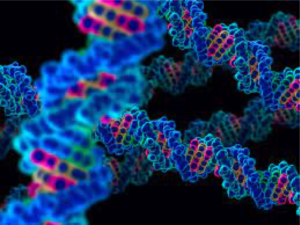Further studies on how to cure Rett Syndrome – Re-activate the inactivated X chromosome.
 The Rett Syndrome Research Trust, USA (RSRT) has continued to broadcast webinars which are designed to introduce researchers with an interest in developing a cure for Rett Syndrome, and present details of progress. As noted in previous articles, RSRT provides financial support to researchers in six major areas of research, with the objective of finding a cure for Rett Syndrome. The six areas of research are;
The Rett Syndrome Research Trust, USA (RSRT) has continued to broadcast webinars which are designed to introduce researchers with an interest in developing a cure for Rett Syndrome, and present details of progress. As noted in previous articles, RSRT provides financial support to researchers in six major areas of research, with the objective of finding a cure for Rett Syndrome. The six areas of research are;
- Gene therapy
- DNA editing
- RNA modification and RNA editing
- RNA trans-splicing
- MeCP2 reactivation
- MeCP2 protein replacement
As I noted in a previous article, the aim of each of these strategies is to deliver a functional version of the MeCP2 protein to affected neurons in the brain to replace/supplement the existing defective MeCP2 protein and in so doing correct the function of these neurons to realise a cure. In a recent webinar, Drs Bhatnager, Meyer and Martin from the University of Virginia, Nationwide Children’s Hospital and Alcyone Therapeutics respectively discussed a strategy on how to re-activate the inactivated X chromosome, that could be expected to result in expression of a functional MeCP2 protein, resulting in a cure.
The strategy is predicated on several key facts;
- all females have 2 copies of the X chromosome, whereas males have one copy of the X chromosome and one copy of the Y chromosome
- Rett Syndrome results from mutations in the MeCP2 gene which is contained in the X chromosome
- to ensure that the expression of X-linked genes in females is not twice as high as that in X-linked genes in males, 50% of X chromosomes are inactivated in females, in a random process
- thus, all Rett Syndrome individuals have one copy of the X chromosome which contains a mutant MeCP2 gene and one copy of the X chromosome which contains a functional MeCP2 gene
- MeCP2 is expressed in many cells throughout the body, but is predominantly expressed in neurons in the brain where the protein normally controls many aspects of development.
Consequently, in theory, only 50% of neurons will express the mutant form of MeCP2. The different strategies noted above are designed to increase the level of functional MeCP2 expression to a similar level to that found in healthy individuals and this webinar addressed the topic of X chromosome reactivation.
The principle behind the strategy was explained by Dr Bhatnager and was published fairly recently in a leading international journal (Przanowski et al, 2018; PNAS July 31, 2018 115 (31) 7991-7996; first published July 16, 2018; https://doi.org/10.1073/pnas.1803792115). This is important as it confirms that the research results have been peer reviewed at the highest level. The results of this study that were presented in the webinar confirmed reactivation of X-linked MECP2 in cultured cells by biological or pharmacological inhibition of factors which are essential for X chromosome inactivation; in other words, X-linked protein expression from the inactivated X chromosome can be rescued. The study also showed that that direct injection of the inhibitors reactivated X-linked Mecp2 in the neurons of adult Rett Syndrome mice.
Dr Meyer then presented data which confirmed that adeno-associated virus (AAV), used in previous studies to deliver the gene to cure smooth muscular dystrophy (SMA-the topic of a previous article in the RSAA Newsletter) was the method of choice to deliver the X-chromosome reactivation factors. She explained that the Nationwide Children’s Hospital has already translated 13 different gene therapies to the clinic and has spawned several gene therapy companies, confirming that there is considerable optimism for the future delivery of products by AAV aimed at reversing or curing Rett Syndrome. However, the production facilities for AAV (and other viral vectors) are currently overstretched at present due to the Covid-19 pandemic, making it even more important that her studies to deliver the minimal dose to Rett patients should continue. Equally important, Dr Meyer emphasised that current delivery strategies for AAV failed to deliver the virus evenly throughout the central nervous system, as shown in studies in non-human primates, and although it is unclear if an even distribution throughout the brain and spinal column is important, common sense suggests that this is desirable, if not vital.
The webinar concluded with a presentation from Dr Martin. His company has developed a machine which optimises the delivery of biologicals, including AAV, to the brain in an even controlled manner. The strategy is to deliver the biologicals via lumbar puncture to gain access to the cerebrospinal fluid in the backbone rather than the more traumatic method of delivery via direct injection into the brain. He showed data which confirmed that typical delivery of these biologicals through lumbar puncture resulted in uneven distribution of the drug, most of which remained in the lumbar spine. In contrast delivery using the technology developed by Alycone Therapeutics overcame this problem and resulted in a uniform distribution throughout the central nervous system of non-human primates. This had the added advantage of reducing the dose of the biological resulting in the ability to eventually treat more patients.
This webinar highlighted the vital importance of collaboration in science; the reagents developed by Dr Bhatnager which are able to reactivate the X-chromosome are totally dependent on delivery via the AAV. In turn, the AAV technology developed by Dr Meyer and her colleagues is equally dependent on the widespread, even distribution of the drug-loaded AAV using the technology developed by Dr Martin and Alycone Therapeutics. However, the timelines for introduction of this technology into the clinic have been delayed as a result of the Covid-19 pandemic, so that no date for a clinical trial has yet been determined.
In more general terms, most if not all of the strategies noted above designed to cure Rett Syndrome e.g., Gene therapy, DNA and RNA editing, RNA trans-splicing and MeCP2 reactivation are dependent on delivery of the active ingredient into the brain, so that the technology developed by Alycone Therapeutics is relevant to each of these strategies. Progress on multiple fronts and productive collaborations are vital for the timely introduction of these therapies into the clinic. The clinical trial proposed for later this year by Novartis, which is dependent on the delivery to the brain of a functional MeCP2 gene by AAV, is an excellent example of the outcome of such collaborations.
Eric Gowans
